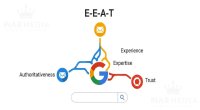What Is HTML? The Fundamental Language of the Web and Its Importance for SEO (2025)
Learn what HTML, the cornerstone of web pages, is. Discover semantic tags, their effects on SEO, and its relationship with CSS/JS with up-to-date 2025 information. Click to set up the skeleton of your site correctly! You will find answers to all your questions related to topic What Is HTML? The Fundamental Language of the Web and Its Importance for SEO (2025) in the continuation of the text.

What Is HTML: An In-Depth Look at the Cornerstone of the Web
What Does HTML Do? The Skeleton of a Web Page
The Building Blocks of HTML: Tags and Elements
The Indispensable Relationship Between HTML and SEO
Semantic HTML and Meaningful Value
Heading Hierarchy and Meta Tags
alt Text for Image OptimizationThe Web’s Holy Trinity: HTML, CSS, and JavaScript
HTML5: The Standard of the Modern Web
Expert Support for a Professional Web Presence
Behind every web page you browse on the internet, every blog post you read, and every web application you use, there is a fundamental technology: HTML. So, what exactly is HTML, the indispensable skeleton of the digital world, and what does it do?
In this guide we’ve prepared at Piar Medya, we will step into the mysterious world of HTML and discover how it forms the foundation of websites.
What Is HTML: An In-Depth Look at the Cornerstone of the Web
HTML, that is, HyperText Markup Language (Hyper Text Markup Language), is not a programming language but a markup language. Its role is to explain to browsers the meaning and structure of text, images, and other content on a web page. It is the set of codes that defines the page’s headings, paragraphs, lists, links, and images.
What Does HTML Do? The Skeleton of a Web Page
We can liken HTML to the basic structure of a building. Just as a building cannot stand without walls, rooms, and floors, a web page cannot exist without HTML. Its primary function is to organize content structurally.
- Interpreting Text: Specifies which text is a heading and which is a paragraph.
- Creating Sections: Divides the page into logical sections such as header, main content area, sidebar, and footer.
- Building Links: Creates hyperlinks that allow words or images to be clicked to navigate to other pages.
- Embedding Media: Inserts multimedia elements such as images, videos, and audio files into the page.
In short, HTML takes raw content and transforms it into a structured format that the browser can understand.
The Building Blocks of HTML: Tags and Elements
HTML issues its commands through tags. Tags are keywords written between the less-than < and greater-than > symbols. Most tags are used in pairs: a start tag <p> and an end tag </p>. Everything between them forms the content covered by that tag. The combination of the start tag, content, and end tag is called an element.
<p>This is a paragraph content.</p>
Some of the most commonly used basic tags are as follows:
<h1>,<h2>, ... ,<h6>: Heading tags.<p>: Paragraph tag.<a>: Anchor (link) tag.<img>: Image tag.<div>: A generic container used to divide the page into sections.
The Indispensable Relationship Between HTML and SEO
One of the topics we at Piar Medya emphasize most is the direct impact of correct HTML usage on Search Engine Optimization (SEO). Search engines like Google examine your HTML structure when crawling your site to understand what your content is about. Clean, meaningful, and structurally correct HTML code is critical for your SEO performance.
Semantic HTML and Meaningful Value
Semantic tags introduced with HTML5 (<article>, <section>, <nav>, <header>, <footer>) give search engines much clearer information about the structure of your content. For example, placing your menu inside a <nav> tag instead of a generic <div> tag is the correct way to tell Google “This is the navigation menu of my site.” This strengthens the context of the content and is an approach highlighted in Google’s SEO Starter Guide.
Heading Hierarchy and Meta Tags
Using only one <h1> tag on your page and organizing subheadings as <h2>, <h3> in a logical hierarchy increases your content’s readability and SEO value. Additionally, the <title> tag and the <meta name="description"> tag are among the most important HTML elements that directly affect how you appear in search results.
alt Text for Image Optimization
The alt (alternative text) attribute within the HTML <img> tag describes the image in cases where it cannot be displayed or for users using screen readers. It also strengthens your image SEO by informing search engines about what the image is.
The Web’s Holy Trinity: HTML, CSS, and JavaScript
Modern web design is not made up of just HTML. It usually comes to life through the combination of three core technologies:
- HTML: The skeleton and structure of the site.
- CSS (Cascading Style Sheets): The site’s visual design, colors, fonts, and layout. In short, the clothes the skeleton wears. For more information about CSS, MDN Web Docs is a great resource.
- JavaScript: The site’s interactive features and functionality. Like a nervous system, it allows the site to respond to user interactions. To learn the basics of JavaScript, you can check out MDN’s JavaScript guide.
HTML5: The Standard of the Modern Web
The current standard we use today is HTML5. It has far more capabilities compared to its previous versions. The <video> and <audio> tags for playing video and audio files directly in the browser, improved form controls, and the semantic tags mentioned above are among the most important innovations that came with HTML5. The World Wide Web Consortium (W3C), the organization that sets web standards, governs the development of these standards.
Expert Support for a Professional Web Presence
Understanding the fundamentals of HTML is the first prerequisite for taking an informed step in the digital world. However, building a website that maximizes user experience, is mobile-friendly, fast, and above all flawless in terms of technical SEO requires deep expertise and experience. Every detail, from your site’s HTML structure to server configuration, needs to serve your business goals.
If you also want a website for your brand that is not just "existing" but "making a difference", meet Piar Medya’s expert web design agency to get performance- and user-focused websites created. Let’s strengthen your digital presence together with bespoke strategies.
FREQUENTLY ASKED QUESTIONS (FAQs)
HTML5 is the most current and capable version of HTML. It offers multimedia support (<video>, <audio>), more advanced form elements, and semantic tags like <article> and <nav> that are critical for SEO.






